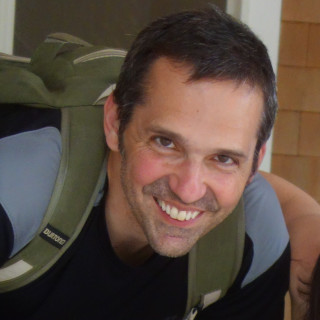
The American College of Graduate Medical Education oversees all residency and fellowship programs in the United States. Salaries during these so-called “post-graduate years” vary by city and state, but typically work out to well below minimum wage per hour. All the while, interest accrues on obscene student loan debts, according to the basic laws of usury, such that, realistically, most residents are actually paying for the coveted opportunity to work ludicrous hours.
That said, there are in fact nominal regulations in place regarding the number of hours an indentured “trainee” is allowed to work. Regulations, and, as noted, low pay and profound debt, have created at least two generations now of resident physician-liars who gulp down coffee, pop stimulants and antidepressants, and swear to their program directors that they only moonlight twice a month. Denial is a primitive but powerful defense mechanism, and much of the world turns on it; this back-to-the-corner defense not only allows program directors and other hospital administrators the nation over to look the other way, but allows for many more patients to receive care, because — and believe me — no one else is going to work those ungodly hours.
How did these odd, seemingly random, regulations come about? We have all heard the stories from our medical elders, “Back in my day, we worked 36-hour shifts. We didn’t have this ‘post-call’ holiday.” (Certainly, those were different times. Hospital stays were much longer. Emergency Departments were not nearly as busy. Patients did not survive so long with ever-increasing morbidity. The sheer amount of information to absorb was much less. And there was no student loan debt crushing residents 24/7.)
These regulations, initially 30-hour limits per shift, 80-hour limits per week – averaged over four weeks – are, were, like most political maneuvers, knee-jerk reactions to a media-hyped single atypical tragedy. They were first adopted in 1989 as law in New York, and more broadly as NCAA-style self-imposed sanctions in 2003 by the American College of Graduate Medical Education.
That is, ever since 18-year-old Libby Zion, a troubled young lady from a New York City family of means and influence — unwittingly made posthumously famous by said family — at Bennington College, a young lady who – to judge from available testimony by those who knew her well — regarding her intense and brief, consistently unhappy, romantic relationships, her chronic substance use, and her frequent and knowing “doctor-shopping” – suffered from significant characterological disturbance, overdosed on cocaine, taken in combination with her considerable outpatient prescription combination. This combination of drugs included, at the very least, Tagamet, Motrin, Actifed, the two potent anxiolytics Dalmane and Valium, the potentially dangerous antidepressants imipramine and Nardil, the antibiotics tetracycline, doxycycline, and erythromycin, the sedating antihistamine chlorpheniramine, and most recently at the time, the potent opioid pain reliever Percodan — drugs prescribed by at least seven different specialists in different locations, none of whom were known to be in communication with the others. This was 1984. There was no consistent or sure way to cross-check a patient’s prescriptions at that time.
Ms. Zion, in this context, was treated by “overworked” residents at a New York City hospital after presenting to the emergency room with a fever, white count, and “flu-like” symptoms. Not forthcoming about her cocaine use that night, nor about her many potentially catastrophically interacting medications, and by all accounts able otherwise, at least initially, to present her own story reasonably and coherently, her working diagnosis was, not unreasonably, an unknown infection.
Admitted to a regular medical floor, she was appropriately treated for an infection of unknown source. But her condition deteriorated, and she eventually developed a very high fever and died of cardiac arrest. Cause of death at the time was listed as pneumonia. The consensus currently is that Ms. Zion suffered from a fatal case of serotonin syndrome, secondary to her multiple prescribed medications in combination with cocaine. (This syndrome was identified as early as the 1960s, but not widely known in the medical community until the advent of Prozac and other selective serotonin reuptake inhibitor antidepressants in 1989 and through the 1990s. Ms. Zion’s outpatient drug combination alone was a setup for this condition.)
Since then, as a direct result of Ms. Zion’s influential “New York Times” columnist and restaurateur father, Sidney Zion, suing everyone and every facility at every level he could, blaming everyone but himself for what amounted to his daughter’s unwitting suicide, duty hour limitations for residents and fellows have been adopted nationwide.
The case is still debated in legal circles. Regardless, what is clear now — from a once again common sense perspective — is that, when considered in isolation, Ms. Zion’s illness was self-inflicted, the treatment she received almost certainly did not exacerbate her illness, it just didn’t help her, and if she had been more forthcoming with her own medical history, especially her drug use, she may have been immediately transferred to an ICU setting and would have stood a much greater chance of survival.
And these duty hour numbers are quite arbitrary, not based on any particular evidence, and there remains — after sixteen plus years — no evidence that these regulations have actually cut down on patient morbidity and/or mortality. In fact, the system of “night floating” residents to cover overnight hours that has been ubiquitously adopted to cover the coverage gaps in response to the hour limitations appears, at least preliminarily, to lead to more medical errors.
I suppose the bigger question is why does this system of indentured servitude even survive in the first place? Especially in this time of greater sensitivity to physician burnout? The system is archaic, arguable medieval, created for a time when there was still a “medical landscape” and not a “health care landscape.” It has been propped up all these years because it costs hospitals on average $130,000 per year to employ a resident who will work twice the hours of an attending who will otherwise cost them twice the money. (Of course, less than half of that $130,000 actually goes to the resident.)
It’s just too good a deal for the hospitals. And as one may guess, the voting board of the ACGME, the group who makes these duty-hour decisions, at any given time has several hospital executives on it. They are clearly incentivized to max out labor at the cheapest cost. Burnout be damned.
Two immediate suggestions for the duty hour problem:
- A class action suit by residents across the country for a salary commensurate with a minimum wage standard. Right now residents average $12 an hour. Most states are advocating for a minimum wage of $15 an hour. This would give all residents a 25 percent raise at least.
- Max out shifts at 24 hours, no more than every fourth day, after which the resident goes home and has a true “post-call” day.
It is also well to keep in mind, as an educated healthcare consumer, that attending physicians have no regulations on their work hours. Your airline pilot is limited to no more than eight-hour shifts, after which he or she is mandated to take a twelve-hour break. Your moonlighting surgeon — again, working on that debt — may be on his or her 48th hour, for all you know.
Elliott Martin, MD, is a board-certified adult and child psychiatrist at Newton-Wellesley Hospital, as well as the Director of Consultation and Emergency Psychiatric Services at Newton-Wellesley Hospital, and Assistant Clinical Professor of Psychiatry at Tufts University School of Medicine. He is a 2018–19 Doximity Author.






